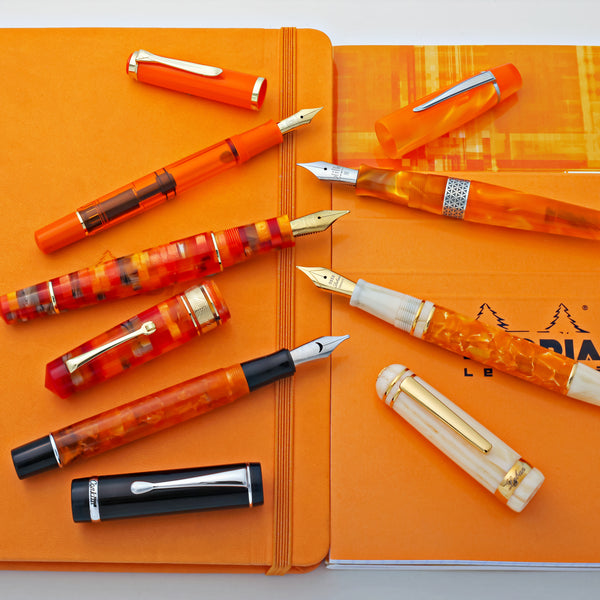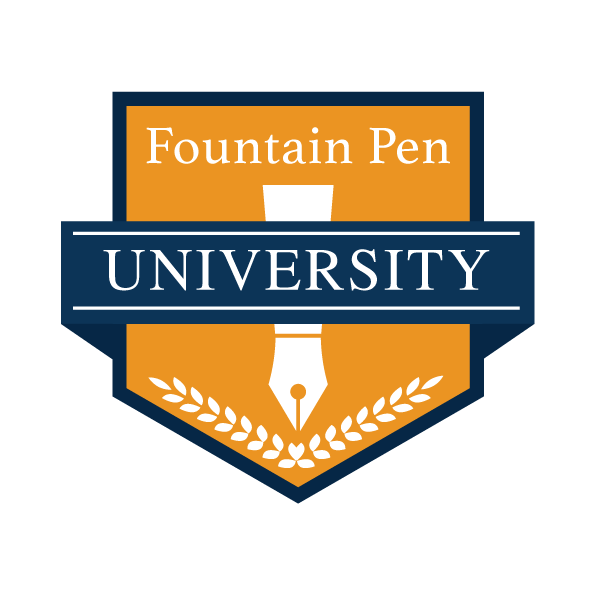How do we test fountain pen nibs?
The pen is a deeply personal tool available in many shapes, sizes, materials, colors, and tip options to perfectly fit the writer. As there are pens to fit each hand, there are nibs to fit each writing style. While the Estie does use the common Jowo #6 nib, Esterbrook sets itself apart with the inclusion of specialty nib grinds to broaden the range of nib styles.
I'll show you all of these Esterbrook pen nibs starting with the standard range of Jowo nib sizes you might already be familiar with.
For this writing test, I inked each Esterbrook Estie fountain pen with Esterbrook Cobalt Blue ink and wrote on Rhodia 80gsm dot grid paper. Each nib was filled from the bottle and tested without any tuning or adjustment.
In evaluating each nib, I focused on three points of concern for most pen enthusiasts:
- Line width (measured in mm)
- Smoothness / Feedback
- Ink Flow / Wetness
Results may vary if you use a different ink or paper, apply more or less hand pressure, or due to differing nib manufacturing tolerances. All measurements were taken with a pair of digital calipers and a jeweler's loupe.



